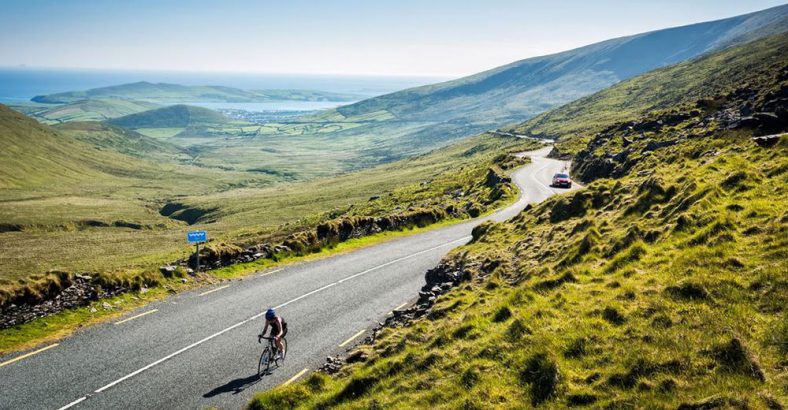Drive past medieval castles that point to former times, cruise past the Atlantic Ocean as it breaks upon a windswept shore, and pull into tiny villages for a pint of Guinness shared with friendly locals.
Welcome to a driving holiday in Ireland!
Ireland is a land of ancient history, myth and legend, populated with friendly locals with story telling and laughs in their veins. Unique from the rest of Europe and cut from a different cloth, this Celtic country is full of authentic and immersive experiences.
But what makes Ireland ripe for a visit is its connectivity, size and quaint accommodation. With one-stop flights ex Australia to Ireland via the Middle East and excellent air access to other European cities, Ireland is perfect as a starting point for a European holiday. Plus, it’s diminutive size means it can be easily and quickly explored with a car.
And then there’s the B&B accommodation. Ireland has over 800 B&B properties scattered throughout the island, all independently owned and charming to the bone.
But back to the road: here are three epic Irish road trips that you MUST drive this year!
THE WILD ATLANTIC WAY (4+ DAYS)

The Wild Atlantic Way
Enchanting and scenic – the Wild Atlantic Way is a four-day (minimum) itinerary that plunges you into Ireland’s rugged landscape. The world’s longest coastal touring route at 2,500 kilometres, this scenic drive can be driven in its entirety or tackled in sections. Along the way you can visit Killarney National Park, Staigue Fort, Derrynane Beach and friendly country towns and villages. All this, whilst cruising along Ireland’s most photographed coastline and staying in quaint B&Bs where you’ll instantly feel at home. Other breathtaking sites include, Roslee Castle (built in 1207), Blennerville Windmill, the Cliffs of Moher and tons of awe-inpiring islands.
If you’re going for the complete option, you’re going to need to give yourself at least 10 days. That’s without visiting many of the attractions just off the main route, such as The Gap of Dunloe and the UNESCO Heritage listed Valentia Island – both worthy of a visit.
Whether you break up this epic route, or drive the whole thing, you’ll need some extra time up your sleeve. Stopping at the breathtaking spots along the route is a must to take it all in. Ireland’s windswept Atlantic coastline is so beautiful you’ll be pulling over about a billion points along the way to pull out your camera!
IRELAND’S ANCIENT EAST (4+ DAYS)

Rock of Cashel
Vikings, Christians and 800-year-old castles – Ireland’s history stretches back over 5,000 years, but you don’t have to travel back in time to experience the country’s ancient sites. A drive along the Celtic Coast weaves in and out of some of Ireland’s most celebrated historical treasures. Landmarks such as Our Lady’s Island, a site of Christian pilgrimage since around 600AD; Hook Lighthouse, which has been guiding ships into Waterford Harbour for over 800 years; and mysterious Blarney Castle, built in 1446.
Also on the route are Newgrange, Glendalough, the Rock of Cashel and Kilkenny Castle
CAUSEWAY COASTAL ROUTE (3+ DAYS)

What you can see on the coastal route in Ireland
Myth, mystery and legends – taking four days and offering memories that last a lifetime. The Causeway Coastal Route whisks you past legendary landmarks, through landscapes used by Game of Thrones (such as the Cushendun Caves) and into the culture-filled villages of the Glens of Antrim.
Starting in Belfast (home to Titanic Belfast – the world’s leading tourist attraction) and ending in Derry-Londonderry, you’ll hug the coast for almost the entire journey. Passing towering lighthouses which look out onto the deep blue of the sea, as well as rugged sections of coastline. There’s also the UNESCO World Heritage Site Giant’s Causeway, where 40,000 hexagonal columns blanket the landscape and form a path out into the ocean.
For more information, click here.

